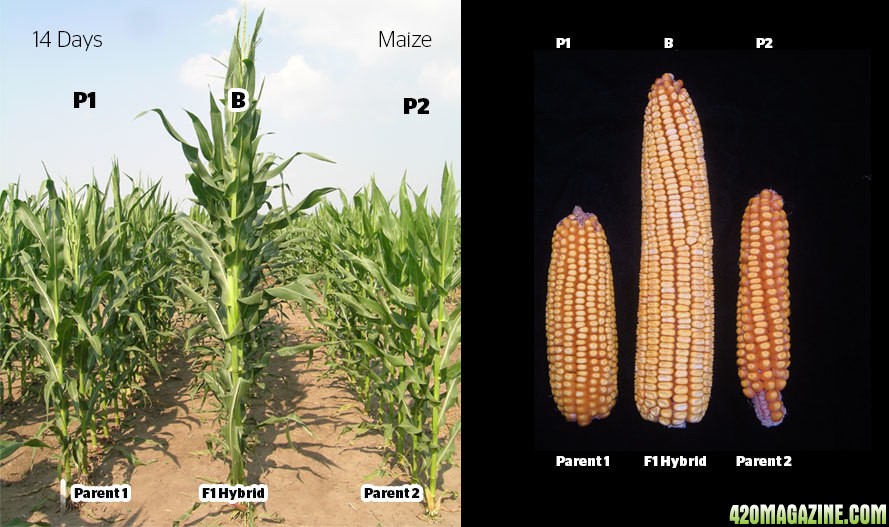hi Jackalope,
What makes this whole F1 Hybrid Vigour topic more puzzling...
is that the effect doesn't always show up.
So, perhaps the most famous example, of an F1 hybrid, is a mule.
Which is a first generation hybrid between a horse and a donkey.
(Mules are normally sterile so you very rarely get second generation mules)
These animals are not more 'vigourous' than donkeys or horses.
These animals are not bigger than donkeys or horses.
However, they are longer lived, than horses and donkeys.
In contrast, ligers (a cross between a male lion and a female tiger)
are usually at least double the size of their parents.
Lions and tigers weigh 500 to 600 kilos (Tigers are generally slightly bigger)
Ligers get 'growth hormone' genes from both parents and consequently they weigh
in at around 1000 kilos. The heaviest recorded liger was 1,600 kilos...
That's about 3 times the average weight of lions and tigers.
Perhaps this 'growth hormone' scenario is also at work in the example
you cite of large F1 hybrids of Timerwolves and German Sheppards in the
MacKenzie Valley.
See the image below to get an idea of how massive ligers are:
Male and female ligers look most similar to (very large) female lions.
An odd detail about male ligers, is that, despite having a male lion as a father,
they don't have the shaggy lion's mane.
You might be forgiven for assuming that the genes for a male lion's shaggy
mane would come from 'dad'... but apparently, it comes from 'mum'.
Evidence for this can be seen in the picture of a male tigon shown below.
You can see that this animal obviously has a very pronounced lion's mane.
But tigons have a male tiger for a dad, and a lioness for a mum.
And since tigers don't have a 'mane'.. the tigon's mane must have come via mum.
A second interesting detail, is that tigons are either the same size as lions
or slightly smaller than lions (all depending on who's articles you read). But in
any event, tigons aren't bigger than either lions nor tigers.
The F1 hybrid vigour shows up for ligers but not for tigons.
The third detail about these cats concerns tigon rarity. Ligers are quite
abundant, tigons are much rarer. The reason for this is that tigon cubs
are often still born. Tigons have a tiger dad and a lioness mum. Out of
the 4 cats (lion, lioness, tiger, tigress) tigers are the biggest
and lionesses are the smallest. An explanation for the tigon still births
is that cubs are physically too big to fit comfortably inside a lioness' womb.
This third detail, makes me wonder if the mixing of these genes is actually
haphazard and chaotic.
I wonder if, lions and tigers are simply not similar enough for the
'F1 Hybrid Vigour' effect to apply. Perhaps it would apply
much better, to the F1 hybrids of Bengal tigers and Siberian tigers.
Or perhaps to the F1 hybrids of African and Indian lions.






